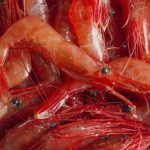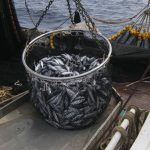The Marine Research Institute has recommended that the Minister of Fisheries increase the capelin quota for the season from 200,000 tonnes to 325,000 tonnes. This has been done following research into the size and distribution of the capelin stock earlier this month, now that the resulting data has been analysed. If the Minister follows the Institute’s recommendations, HB Grandi’s share of the capelin quota could be 44,000 tonnes this season.
The Institute has announced that research vessel Árni Fridriksson undertook a research from the 6th to the 22nd of January, starting off southern Iceland, before following a course all the way along the north coast and as far as the southern Westfjords. For the first few days they were accompanied by five fishing vessels that also worked on establishing the distribution of capelin on northern and eastern grounds. The calculated size of the fishable stock is put at 720,000 tonnes of mature capelin. Before this research was carried out, an estimated 5000 tonnes had been caught, making this a total of stock of 725,000 tonnes. Based on the catch regulation that requires 400,000 tonnes to be left to spawn, the Institute has recommended a TAC of 325,000 tonnes for the season.
According to Vilhjálmur Vilhjálmsson, head of HB Grandi’s pelagic division, Icelandic operators can expect to get around 100,000 tonnes of a 125,000 tonne increase. This means that HB Grandi could expect to see a quota for this season of 44,000 tonnes. In comparison, last year’s quota was 20,500 tonnes.
1100 tonnes of capelin are now being discharged from Ingunn AK in Vopnafjördur and this brings the company’s catch to 11,000 tonnes so far this season, which could leave the company with 33,000 tonnes to catch.
Two of HB Grandi’s vessels, Ingunn and Lundey NS, are fishing capelin, while Faxi RE, which landed 670 tonnes of capelin at Vopnafjördur last weekend, has switched to fishing for pearlside, replacing Ingunn which had landed 500 tonnes of pearlside at Akranes last Thursday.








